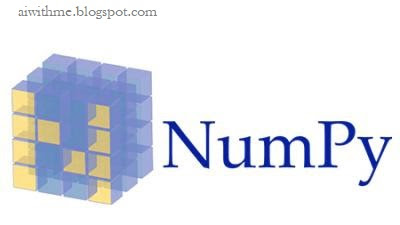Hey Readers, As Python has gained a lot of traction in the recent years in Data Science industry. I wanted to outline some of its most useful libraries for data scientists and engineers, based on recent experience.
NumPy
When beginning to manage the scientific undertaking in Python, one unavoidably desires help to Python's SciPy Stack, which is an accumulation of programming particularly intended for scientific processing in Python (don't mistake for SciPy library, which is a piece of this stack, and the network around this stack). Along these lines we need to begin with a glance at it. Be that as it may, the stack is quite huge, there is in excess of twelve of libraries in it, and we need to put a point of convergence on the center bundles (especially the most fundamental ones).
The most major bundle, around which the scientific computation stack is constructed, is NumPy (remains for Numerical Python). It gives a plenitude of valuable highlights for tasks on n-clusters and lattices in Python. The library gives vectorization of scientific activities on the NumPy exhibit compose, which enhances execution and in like manner accelerates the execution.
SciPy
SciPy is a library of programming for building and science. Again you have to comprehend the contrast between SciPy Stack and SciPy Library. SciPy contains modules for direct polynomial math, enhancement, coordination, and measurements. The fundamental usefulness of SciPy library is based upon NumPy, and its clusters in this way make generous utilization of NumPy. It gives effective numerical schedules as numerical reconciliation, improvement, and numerous others by means of its particular submodules. The capacities in all submodules of SciPy are all around recorded — another coin in its pot.
Pandas
Pandas is a Python package designed to do work with “labeled” and “relational” data simple and intuitive. It is a perfect tool for data wrangling. It designed for quick and easy data manipulation, aggregation, and visualization.
Matplotlib
Another SciPy Stack core package and another Python Library that is tailored for the generation of simple and powerful visualizations with ease is Matplotlib. It is a top-notch piece of software which is making Python (with some help of NumPy, SciPy, and Pandas) a cognizant competitor to such scientific tools as MatLab or Mathematica.
However, the library is pretty low-level, meaning that you will need to write more code to reach the advanced levels of visualizations and you will generally put more effort, than if using more high-level tools, but the overall effort is worth a shot.
With a bit of effort you can make just about any visualizations:
- Line plots
- Scatter plots
- Bar charts and Histograms
- Pie charts
- Stem plots
- Contour plots
- Quiver plots
- Spectrograms
There are also facilities for creating labels, grids, legends, and many other formatting entities with Matplotlib. Basically, everything is customizable.
The library is supported by different platforms and makes use of different GUI kits for the depiction of resulting visualizations. Varying IDEs (like IPython) support functionality of Matplotlib.
Seaborn
Seaborn is mostly focused on the visualization of statistical models; such visualizations include heat maps, those that summarize the data but still depict the overall distributions. Seaborn is based on Matplotlib and highly dependent on that.



Comments
Post a Comment